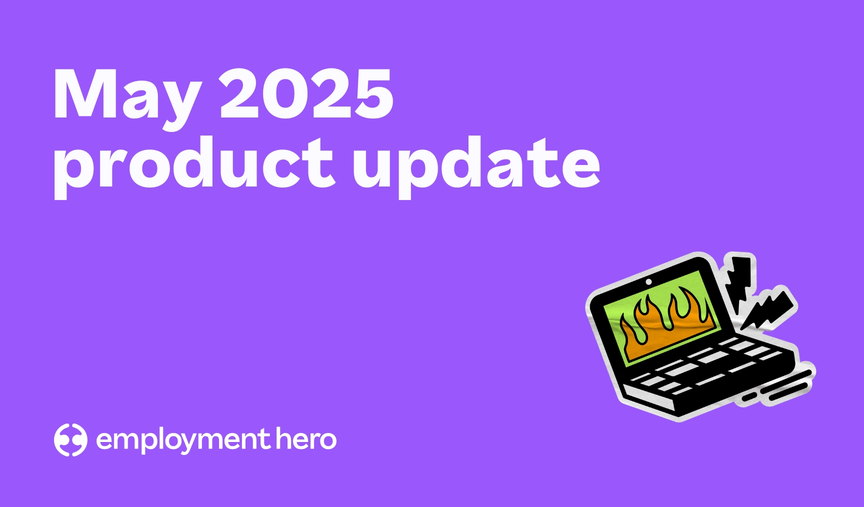It’s time we talked about boundaries at work
With so many elements at play – technology, remote working, flexibility – discussions around boundaries at work are essential.

Contents
When you wake up in the morning, what’s the first thing that you do?
Instinctively, most of us will reach for our phones and look at the notifications that have come in overnight. Some of us will flick to social media, and some of us will flick onto work emails and messages.
While our addiction to our smartphones is one thing (and too big a topic for this blog to tackle), exposing oneself to work in our waking minutes is a deeply unhealthy habit. When we fail to set boundaries between our personal and professional lives, both suffer.
In November of 2021, Portugal’s parliament introduced new laws enforcing an employee’s right to disconnect’. The legislation prevents employers from texting, phoning or emailing their employees outside of working hours.
Whether you agree or disagree with the contentious ruling, it reignited an important conversation about setting boundaries.
Why do we have so few boundaries at work?
With so many elements at play – technology, remote working, flexibility – it’s so important that we open the discussion around setting boundaries at work.
Availability of technology
Technology and the internet have changed everything about the way we work over the last two decades, and this is especially true when it comes to communications. Not only can you take your work emails and messages home with you, but you can also hold them in the palm of your hand 24 hours a day. But what is the cost of this constant availability?
Our smart devices can deliver updates from work first thing in the morning or in the middle of the night. As we spend so much time using our devices, if we don’t set healthy boundaries by removing apps from our phones or turning off our notifications, the lines between our personal and professional digital environments can quickly blur.
A culture of expectations and availability
Your employees won’t just assume that work-life balance is a priority at your company, your culture has to actively promote it.
Leaders within a business often make the mistake, either conscious or unconscious, of creating an ‘always-on’ expectation. This happens when managers set an example of working regular overtime, contacting their teams before or after hours, and working while they are meant to be on annual leave.
Whether leaders are intentionally setting this expectation or not, they set an example for behaviour within the organisation. With technology allowing you to log in from anywhere, it’s easy for teams to feel like they have to match the leader’s working style, creating an expectation for constant availability.
Remote work
A new normal of remote working is one of the few silver linings to come out of the pandemic.
Even though remote work is more conducive to work-life balance than office work is – employees can get more family time, avoid the commute and run local errands during breaks – it can also blur the mental boundaries between home and work.
It can be difficult to leave work behind when you’re set up in the home space. If you don’t have a good culture and set physical boundaries at home, it’s all too easy to log on during nights and weekends.
When your leisure time and work time become one.
Why are healthy boundaries at work so important?
1. They reduce burnout
Burnout is the feeling of being constantly exhausted, emotionally drained, unproductive, and unmotivated at work.
This is often caused by being overworked, feeling like you can’t disconnect from work, and not having enough personal space to feel properly refreshed. It’s a huge problem across the world; our Wellness at Work Report 2022 found that 58% of employees had experienced burnout in the last few months.
Setting boundaries can help reduce burnout by helping employees properly disconnect at the end of a workday. They make it easier to flag when work is becoming overwhelming and help put a stop to emerging burnout before it takes over.
2. They help you find a healthy work-life balance
Work-life balance is essential for happy and productive employees, and achieving it all really comes back to workplace boundaries.
It’s a lack of emotional boundaries that see employees working overtime, adopting an ‘always on’ mindset and feeling like they can’t take time for themselves because work comes first. This can interfere with their personal life, holidays and lunch breaks; those important moments that help employees catch a breath and recharge their batteries.
3. They improve productivity
Sometimes there’s a fine line between working hard and hardly working.
It’s simply not sustainable for an employee to be working far beyond their duties at the expense of their personal time. They may be able to ride the wave of productivity for a little while, but soon their productivity will drop away – along with their sense of wellbeing.
Employees that are productive on a long-term basis are fuelled by regular breaks, self-care and recreational time. Staying physically and mentally healthy is essential to staying focused and doing your best work.
[inline-form form-id=14259 type=’local’ ]
How can managers set boundaries for their teams?
As a manager, you set the tone for your team.
1. Set reasonable expectations
We suggest that setting expectations comes down to two core elements;
- preparing and overseeing a realistic workload
- and communicating at reasonable times in thoughtful ways.
When it comes to workloads, talk to your team about how long each task takes. Remember your employee’s week is not solely filled up by fulfilling what is set in their job description – they’re all juggling meetings, emails, messages, admin, last-minute requests and supporting their team members.
Think about the 70/30 rule; assigned tasks should take up around 70% of their week, with a 30% cushion for other work. Reach out to help your team prioritise their to-do list if work creeps over this level.
When it comes to setting healthy boundaries for workplace communication, try to keep all discussions during working hours. If you work flexibly outside of hours, try scheduling your messages or emails for a later send when your team is back on deck.
2. Don’t reward out-of-hours working
Have you ever recognised or celebrated someone who took big chunks of their personal time to get something at work done? Maybe someone worked long into the evening on a task, and you think you should publicly thank them for doing so.
While reward and recognition is an important part of leadership, celebrating out-of-hours work sets a negative precedent. It sends the message that you value those who work long hours and sacrifice their personal time for the business. Your other team members may begin thinking that they need to do the same to get in your good books.
In an ideal world, your team members will complete their work in the hours that they have. While working out of hours on a special project might happen from time to time, it should be a very seldom occurrence, and your team members should be given appropriate time in lieu at the earliest opportunity to make up for it.
3. Create a process for urgent communications – and stick to it
Have you ever been tempted to send one of your team members a text after 5 pm just to ask them a question that could have waited til morning? How about calling them before 9 am because you just really want a piece of information to help you out?
When you get in touch with your team members via their personal devices outside of hours – you’re crossing a boundary and interrupting their personal time. This should only ever be done in case of an absolute emergency.
To establish healthy work boundaries, we recommend writing up an emergency communications process for your team. Outline what is and isn’t an urgent reason for contacting someone, and commit to never contact each other outside of working hours, except in case of those emergency reasons.
4. Lead by example when taking leave
When you’re on holiday, are you constantly logging into your work accounts ‘just to check in’? Are you leaving little notes and pieces of feedback or sharing work that you’re doing during vacation time?
Apart from showing some micromanagement tendencies, managers who do this are not doing their team any favours regarding boundary setting. Properly disconnecting on holidays is an essential part of recharging to do your best work, which applies to people of all levels.
Delegate your management tasks and provide a contact who can give guidance to your team if required – then log off.
That feeling when you properly log off.
5. Encourage transparency and honest conversations
Do you ask for feedback from your team members? Have you shown yourself to be a good listener and a graceful receiver of critique?
Open and transparent conversations are an important part of being a great manager. If your team doesn’t know that they can come with you when they feel their professional boundaries are being tested, they might become a ‘flight risk’ employee before you can help.
How can employees set personal boundaries at work?
Building boundaries is a two-way street. While an employer or manager must create a culture that respects boundaries at work, there is also some personal responsibility on the employee to prioritise and implement them.
With just a few simple tips, you can get into healthier habits.
1. Turn off notifications after working hours
Having notifications on at all hours of the day is a key characteristic of the ‘always on’ culture that we’re trying to resist. On conscious and subconscious levels, receiving notifications that interrupt our personal life can stress us out and make us feel like we can never disconnect from work.
If you must have working tools on your personal smartphone or laptop, at least put your notifications on a schedule so they automatically turn off after hours.
If your manager hasn’t set up an emergency communications system, talk to them about how they can get in touch with you after hours in an urgent scenario.
Employees aren’t paid on a 24-hour basis, and most roles do not need to be contactable at all hours. You have the right to disconnect digitally, and you’ll likely produce better work and be more productive if you do.
2. Separate your working and personal space as much as possible
More of us than ever have now made our homes our offices, and while there are so many perks around this, we also need to be conscious of making these spaces distinguishable.
Our best tips to create physical boundaries between your home and working space?
- Try to work in a spare room, garage or nook if you can. When you set up a dedicated working space that’s separate from your bedroom or living room, you help your brain set up ‘working zones’ and ‘living zones’
- If you have to work on a kitchen or living room table, try to pack away your working tools at the end of each day. Out of sight, out of mind – this will stop you from thinking about work when you’re trying to unwind
- Avoid working from your bed or working from the couch, this is not only bad ergonomics, but it also places work directly in your relaxing space
- Turn your machines off at the end of the day. It’s not only better for your tech, but it also stops you from hearing or seeing any notifications popping up throughout the night
3. Provide a handover before taking leave
Before you head off on holiday, help yourself avoid thinking about work with a detailed handover. Work with your manager to find other people who can support your duties while you’re away, and give those people specific written instructions or information.
You should also make your team aware of any events or important moments that are happening while you’re away and how they can respond to them. Creating this kind of handover will give you the confidence to maintain boundaries while you’re on vacation.
4. Take regular breaks during the workday
Boundaries don’t just apply after hours – it’s also important to use them throughout your workday. This includes taking a proper lunch break (no more eating at your desk and fishing crumbs out of your keyboard!), having a morning or afternoon tea and ideally taking five for a bit of exercise or a stretch.
Taking breaks throughout the day allows our brains and bodies to have a mini recharge. Getting this space from our screens can help our ideas percolate and give us fresh eyes when we come back to the task at hand.
A happy team is a powerful team
Healthy and happy employees aren’t only more productive and creative, our Wellness at Work 2022 report found that employees are much more likely to be loyal if they feel their company is committed to their wellness.
If you’re looking for more valuable information on employee wellbeing – with essential insights on mental health, occupational and financial wellness – download the free report for your region now.
Related Resources
-
 Read more: Product Update: May 2025
Read more: Product Update: May 2025Product Update: May 2025
Follow our May 2025 product update as we share all of the latest and greatest features we’ve released over the…
-
 Read more: Product Update: April 2025
Read more: Product Update: April 2025Product Update: April 2025
Follow our April 2025 product update as we share all of the latest and greatest features we’ve released over the…
-
 Read more: Product Update: March 2025
Read more: Product Update: March 2025Product Update: March 2025
Follow our March 2025 product update as we share all of the latest and greatest features we’ve released over the…








